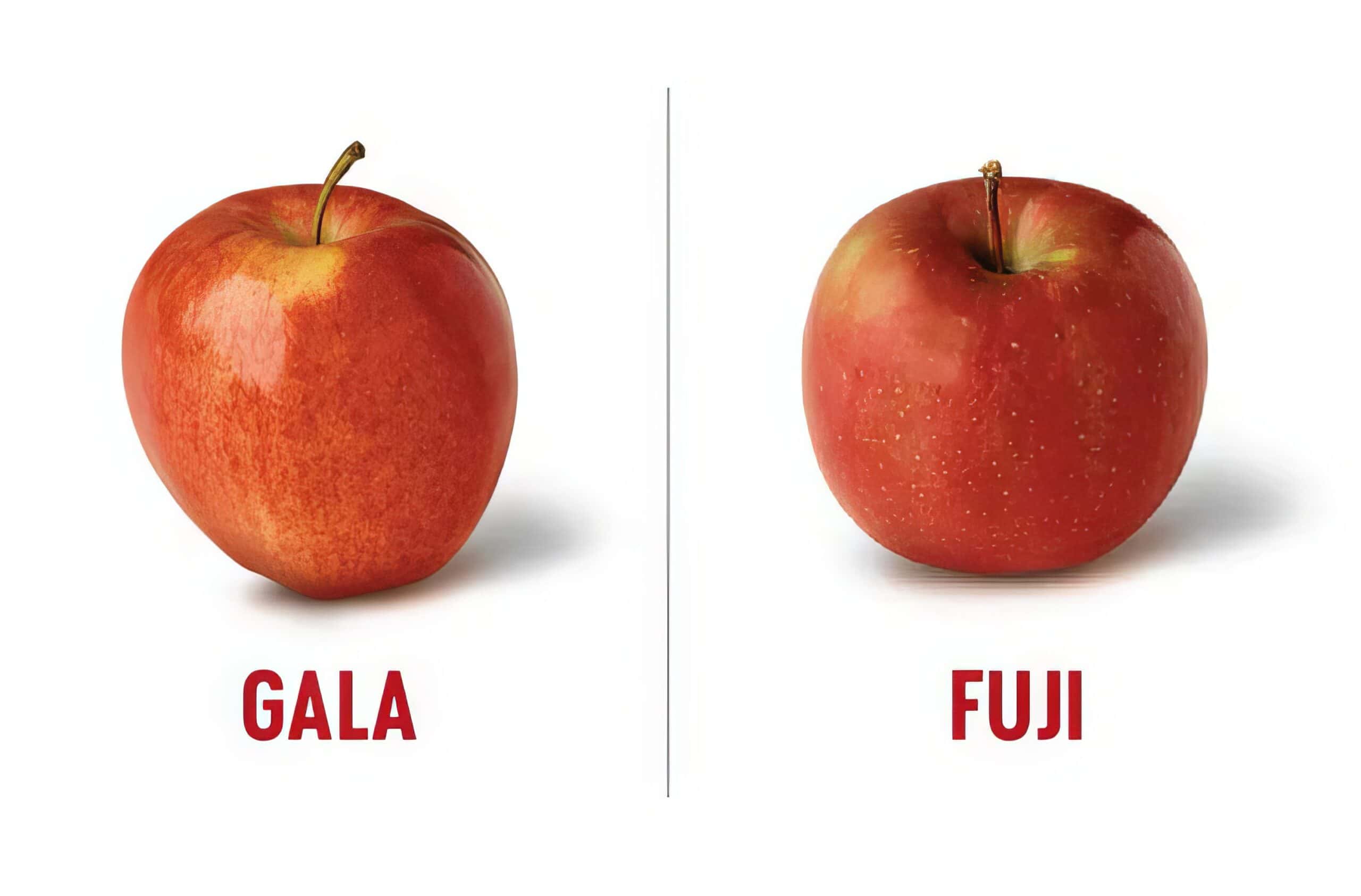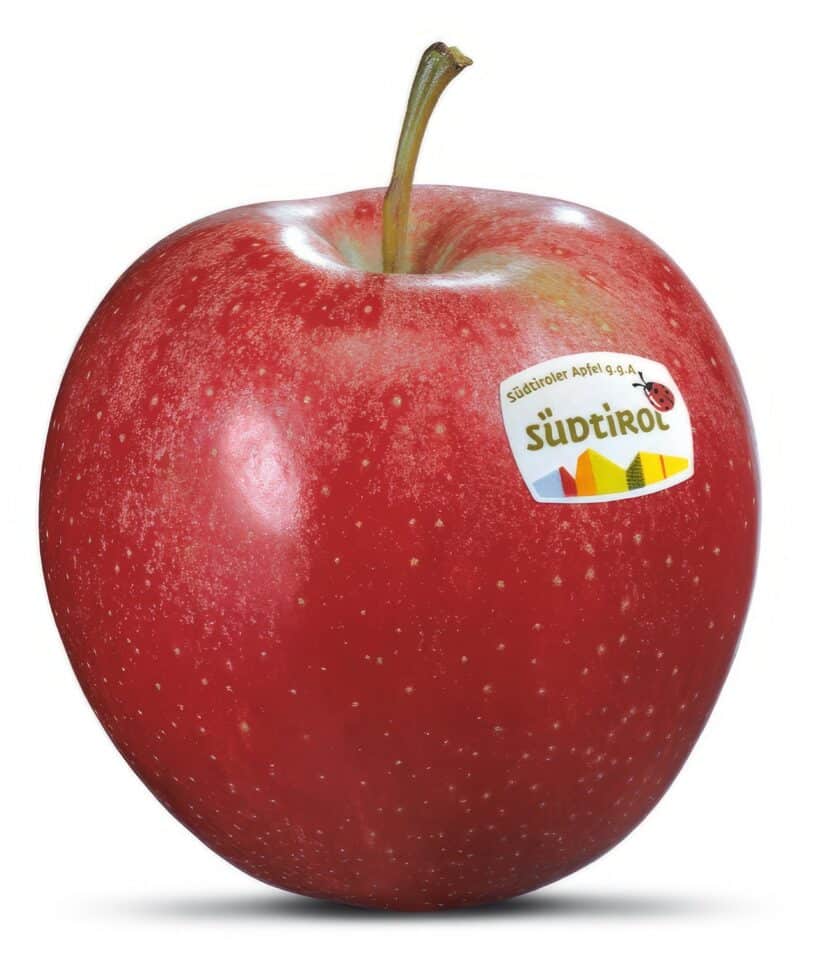Apple season is upon us, and as we savor the crisp, juicy goodness of these delightful fruits, a common question arises — Fuji or Gala? These two popular apple varieties each bring their unique taste, texture, and nutritional value to the table.
In this blog post, we’ll delve into the origins and characteristics of both Fuji and Gala apples, compare their culinary uses and health benefits, and help you decide which one fits your preferences best.
Key Takeaways
Fuji apples originated in Japan and have a crisp texture with a sweet-tart flavor. They are versatile in cooking, contain important nutrients like vitamin A and phosphorus, and provide 17% of your daily recommended intake of dietary fiber.
Gala apples originated in New Zealand and are known for their sweet taste, thin skin, and tender texture. They contain more iron than Fuji apples, as well as high levels of dietary fiber, calcium, and vitamins such as vitamin C. Best uses include snacking raw or adding to baked goods or salads.
Price may be a factor when choosing between the two varieties, with Fujis being more expensive due to their longer growing season and higher demand for their distinct flavor profile. However, both types can be found year-round at grocery stores nationwide.
Ultimately, the decision between Fuji vs Gala apples comes down to personal preference based on taste preference and intended use – whether it’s snacking raw or using them in savory dishes or desserts. Apples provide essential nutrients that contribute to good health overall when enjoyed in moderation.
Table of Contents
Fuji Apples
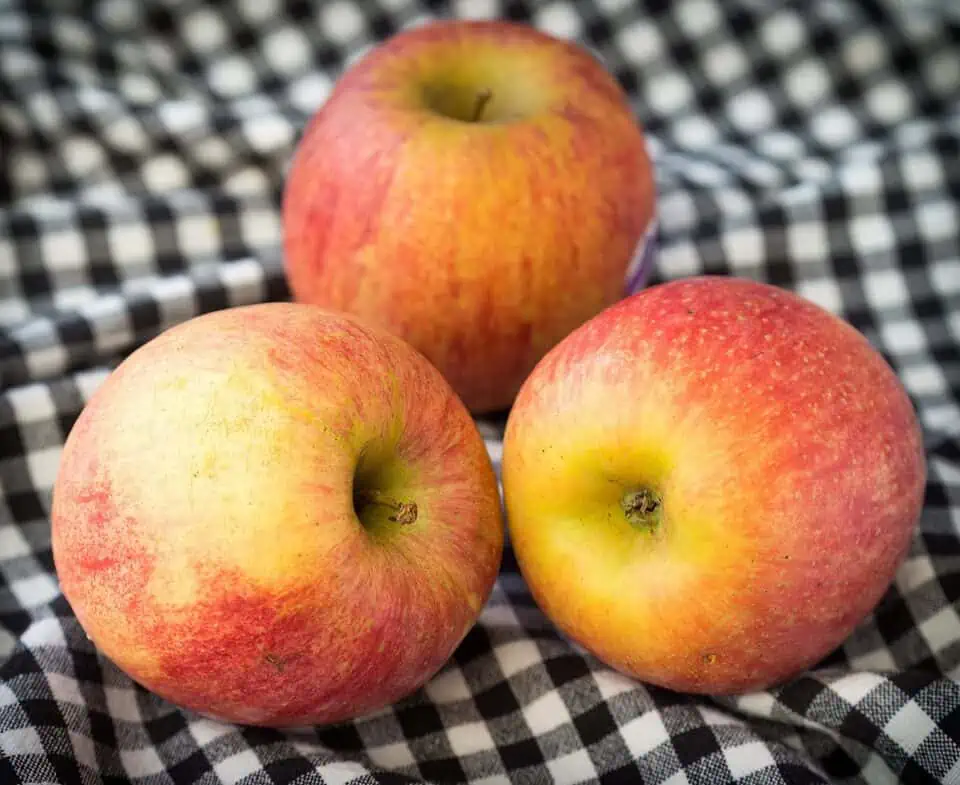
Fuji apples, which originated in Fujisaki, Japan, and were first introduced to the US in the 1980s, are known for their appearance with a greenish-yellow background and red highlights.
Origin And Appearance
The origin of Fuji apples can be traced back to the 1930s in Fujisaki, Japan, where they were created by crossbreeding two well-loved apple varieties: Red Delicious and Ralls Janet.
This unique combination resulted in a distinctly attractive fruit bursting with flavor.
Their round shape and medium-to-large size make them easy to spot among other apples at the grocery store or farmers’ market. Women who appreciate aesthetically pleasing fruits will undoubtedly find the vibrant color of Fuji apples alluring, making them a visually appealing choice for snacking or incorporating into dishes that call for an extra pop of color.
Taste And Texture
Biting into a Fuji apple is a delightful experience for your taste buds, as they boast a slightly tart flavor that’s perfectly balanced with their natural sweetness.
This unique blend of sweet and tart appeals to many palates, making them an ideal snack or addition to various dishes.
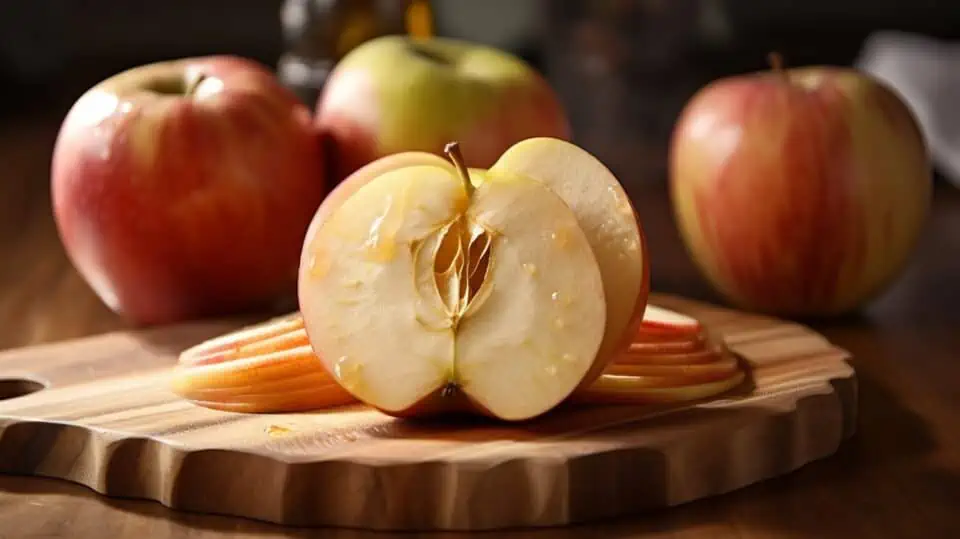
Fuji apples not only provide fantastic flavor but also offer versatility in culinary uses due to their resilient texture. For instance, they hold up well when baked in desserts like apple pies and crisps or when diced into fruit salads for a burst of freshness.
Additionally, the combination of tartness and sweetness makes them perfect for enhancing savory recipes such as pork tenderloin with apples or even cooked down into tangy apple butter.
Nutritional Value
Fuji apples are not only delicious but also packed with a variety of essential nutrients that contribute to a healthy lifestyle. These apples offer an impressive food energy content (kcal and kJ) per 100 grams, providing you with the energy required for daily activities.
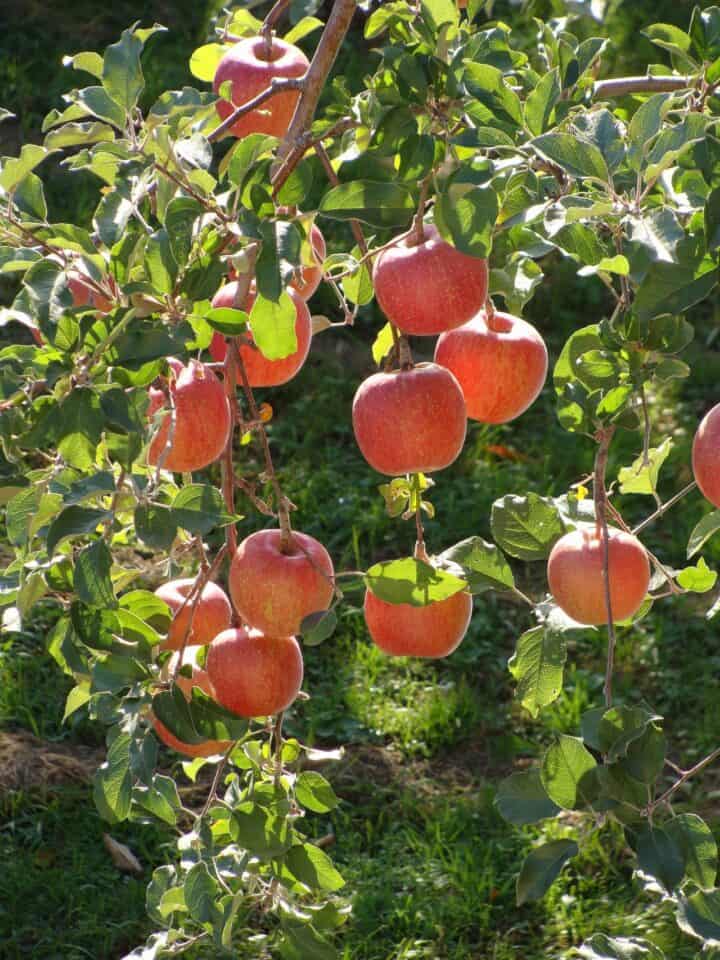
What’s more, Fuji apples are enriched with vital vitamins A (RAE and IU), phosphorus, and iron – all crucial components in maintaining optimal health. Vitamin A plays an essential role in promoting good vision, immune function, and overall cell growth.
Meanwhile, phosphorus supports strong bones and teeth while facilitating efficient energy production within your cells.
Best Uses
Fuji apples are versatile and can be used for a wide range of dishes. Here are the best ways to use Fuji apples:
- Baking: Fuji apples hold their shape well when baked, making them perfect for pies, apple crisps, and crumbles.
- Salads: The spicy-sweet flavor of Fuji apples adds a nice kick to salads, especially when paired with arugula, spinach, or kale.
- Snacking: Enjoy Fuji apples raw as a crunchy snack on their own or pair them with cheese or nut butter for added protein.
- Sauces: The sweet and tart flavors of Fuji apples make them ideal for sauces, like apple sauce or cranberry-apple sauce for pork or turkey recipes.
- Smoothies: Add sliced Fuji apples to smoothie bowls or blend them into smoothies for extra fiber and nutrition.
Fun fact: One medium-sized Fuji apple provides about 17% of your daily recommended intake of dietary fiber!
Gala Apples
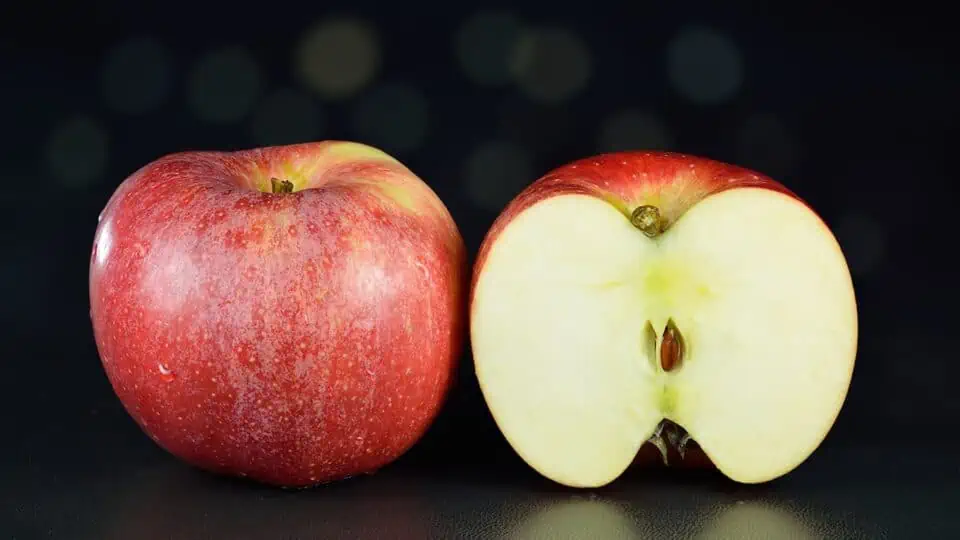
Gala apples, with their crisp texture and sweet taste, are a popular choice for snacking and baking.
Origin And Appearance
Gala apples originated in New Zealand during the 1920s and were introduced to the United States in the 1970s. These apples have distinctive yellowish-orange skin with red stripes, making them easily recognizable at the supermarket or farmers’ market.
Gala apples are small to medium-sized and rounder than other apple varieties, with a thin skin that is easy to peel. The flesh inside is creamy white and juicy, offering a sweet and slightly tangy taste that makes it perfect for snacking or adding to salads.
Gala apples also have a soft texture that makes them ideal for baking into pies or crumbles without needing additional sweeteners.
Taste And Texture
Gala apples are known for their sweet and slightly tart taste, making them a popular choice for snacking or adding to salads. They have a softer texture than Fuji apples, which can make them easier to bite into and chew.
The skin of Gala apples is thinner than that of Fuji apples, so some people prefer Gala if they don’t like the tougher skin of other apple varieties. Overall, the sweetness and tender texture of Gala apples makes them an excellent choice for enjoying raw or incorporating into recipes that call for sweeter fruit flavors.
Nutritional Value
Gala apples are a nutrient-rich fruit that packs a punch when it comes to health benefits. These sweet and crisp apples contain 20% more iron per 100g compared to Fuji Apples, making them an excellent choice for women who may be deficient in this essential mineral.
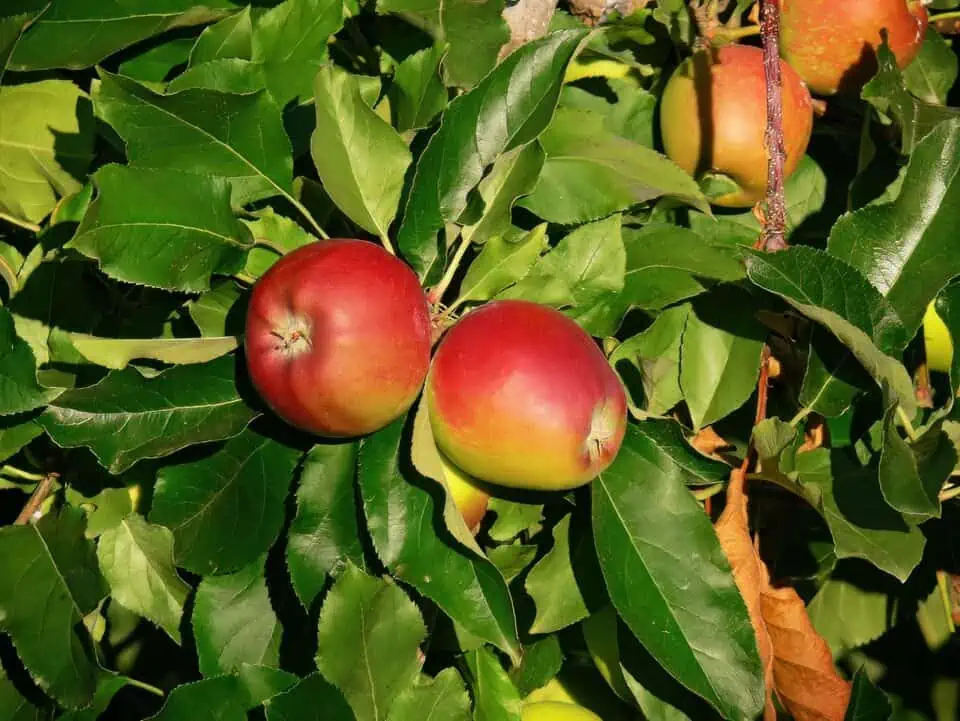
But that’s not all – Gala apples are also rich in vitamins such as vitamin C, which is vital for immune system support and wound healing. Pectin in the apple skin can help regulate cholesterol levels, while calcium promotes healthy teeth and bone growth.
Best Uses
Gala apples are perfect for dishes that require sweet and soft apples. Here are some of the best uses for Gala apples:
- Apple sauce: Gala apples are great for making homemade apple sauce because of their sweet and soft texture. Cook them with some cinnamon and sugar for a delicious treat.
- Baked goods: Since Gala apples are naturally sweet, they work well in muffins, bread, cakes, and pies without needing as much added sugar.
- Smoothies: Add chopped Gala apples to your favorite smoothie recipe for a natural sweetness boost.
- Salads: Add some fresh chopped Gala apples to a salad with spinach or arugula for some extra crunch and sweetness.
- Snacks: Slice up some fresh Gala apples and dip them in peanut butter or yogurt for an easy and healthy snack option.
Remember, while Fuji apples may be better suited for cooking due to their firm texture, there are still plenty of delicious ways to use sweet and tender Gala apples. Enjoy them raw or cooked in your favorite dishes!
Comparing Fuji And Gala Apples
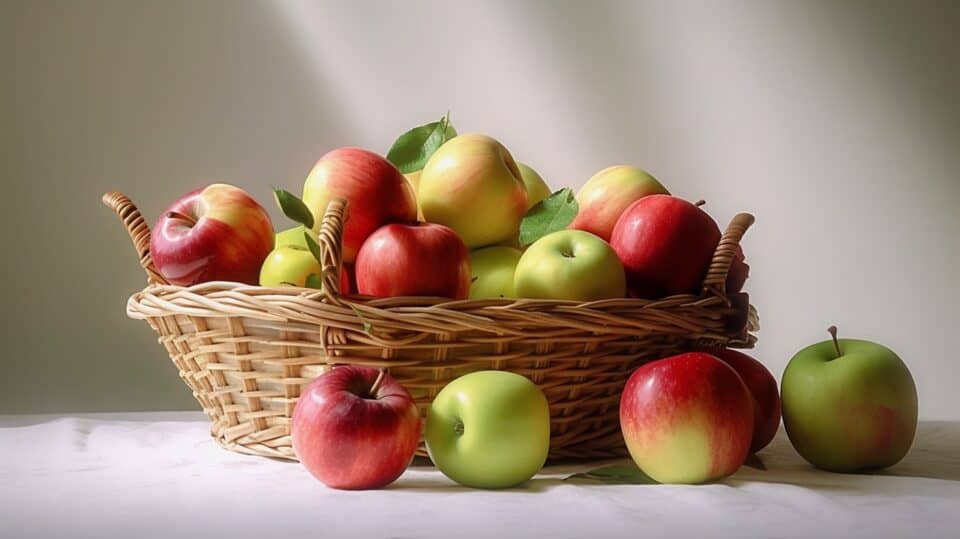
Farming methods for both apples are similar, with organic options available; however, Fujis tend to be more expensive and less readily available than Galas in some regions.
Farming Methods
To truly appreciate the differences between Fuji and Gala apples, it’s essential to understand their farming methods. Generally, both apple varieties are grown on large farms that utilize modern techniques to produce high-quality fruit.

Fuji apples were first developed in Fujisaki, Japan, and require specific growing conditions, such as mild temperatures and a long ripening period. These trees need ample sunshine during the day but cooler evenings to maintain crispness and sweetness.
On the other hand, Gala apples originated in New Zealand and can grow in various climates worldwide; however, they thrive best in regions with cooler summers like Washington State or upstate New York.
Price And Availability
The price and availability of Fuji and Gala apples are important factors to consider when choosing which apple variety to buy. In general, Fuji apples tend to be more expensive than Gala apples due to their longer growing season, thinner skin, and higher demand for their distinct flavor profile.
While the price may play a role in selecting between these two delicious apple varieties, it’s important to remember that taste preference is subjective. Some people may prefer the crisp sweetness of Gala apples, while others enjoy the slightly tart flavor and firmer texture of Fuji apples.
Storage And Shelf Life
Knowing how to store your apples correctly can help extend their shelf life and keep them fresher for longer. Both Fuji and Gala apples should be stored in the refrigerator’s crisper drawer, wrapped tightly in a plastic bag to prevent moisture loss.
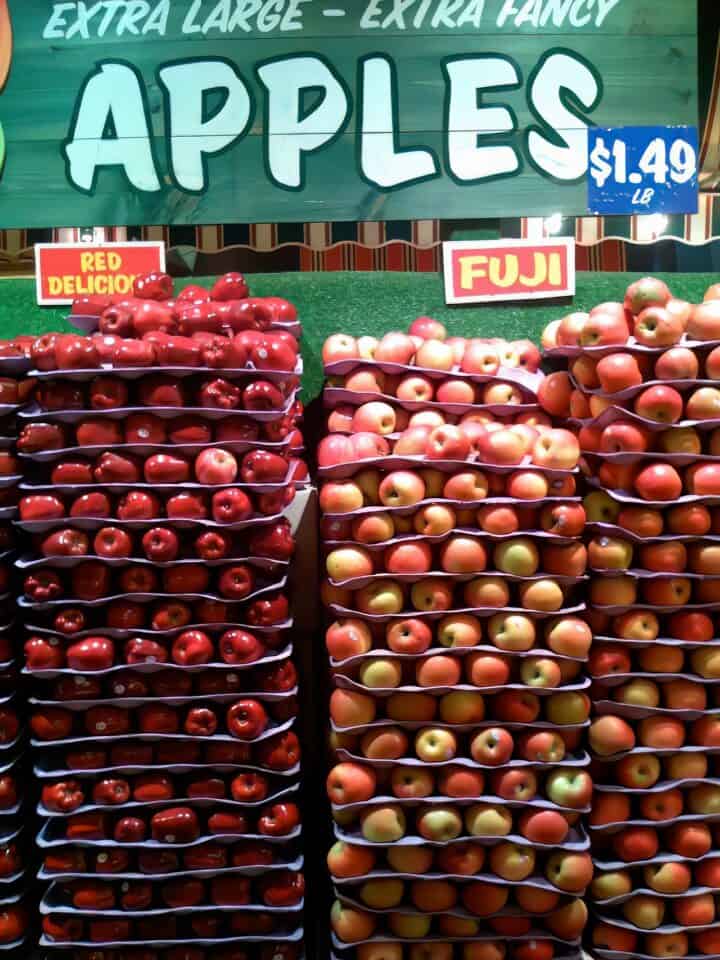
Properly stored Fuji apples can last up to eight weeks, while Gala apples can last up to six weeks. This means that you don’t have to worry about rushing through all of your favorite apple recipes before they start going bad! With a little extra care during storage, you can enjoy these delicious fruits long after they’re out of season.
Conclusion
In conclusion, the debate between Fuji and Gala apples is a close one. Both varieties offer numerous health benefits, such as fiber, vitamin C, and antioxidants.
While Fujis are sweeter with thicker skin, Galas have more tartness and hold up better when cooked or baked in pies or tarts. The choice ultimately comes down to individual preference and intended use.
But no matter which types you choose, incorporating apples into your diet can provide essential nutrients for improved overall health and wellness.
